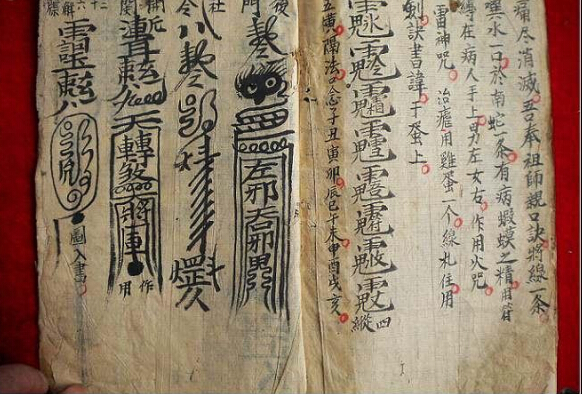Image historiography advances study of Taoist symbols

Fu Lu are characters or figures used by Taoists as magic symbols,
appearing in countless wide varieties.
With regard to representative symbols, Taoism is divided into two schools— the Danding School and the Fu Lu School (Book of Prophecy School). The Danding School is famous for symbols of Chinese alchemy, and the Fu Lu School is well known for its magic symbols, wards and incantations.
Fu Lu are characters or figures used by Taoists, and they appear in countless wide varieties. There is a nuanced difference between Fu and Lu. Fu consists of words to avoid misfortune as well as incantations, ghost imagery, picture of gods and other figures. Lu comprises mainly the names of gods and spirits along with descriptions of their costumes and functions. Taoists believe that Fu Lu have extraordinary power, and they often rely on the practice to dispel ghosts, suppress evils, treat illness and pursue happiness. Taoists people carrying Fu Lu wards with them can eliminate evils and ghosts, escape from beasts and avoid harm from weapons.
Fu Lu symbols are generally written or drawn on media, such as paper, silk, bamboo and wood, but some of them are engraved or forged on parts of buildings, stone and metal works. A few Fu Lu are abstract symbols, but most Fu Lu are not real characters, and they are composed of all sorts of strange structures, which are beyond recognition to an ordinary person. Only experienced Taoists can read and draw them. Although a portion of Fu Lu’s characters and figures are not difficult to understand, people without experience cannot read and recognize them.
Fu Lu have a variety of rich meanings. If we probe into the meaning of Fu Lu, interesting findings emerge. For instance, “Five Mountains True Shape Tablet” is a kind of Fu Lu completed approximately at the time of the Wei and Jin Dynasties. It was of great significance to Taoists living in the Six Dynasties, and they often carried it around while living in seclusion.
Fu Lu have not only captured the interest of Chinese scholars but are objects of fascination for foreign researchers as well. French scholar Anna Seidel noted their significance in her book Chronicle of Taoist Studies in the West. The studies of Max Kaltenmark and Rolf Stein also helped to further ascertain the roots of Fu symbols before the Han Dynasty.
Although scholarly research has borne fruit in the field, there is still great potential for further study when image historiography methods are utilized. Image historiography will accelerate the development of the study of Chinese Taoism.
Zhu Yueli is from the Institute of Taoism and Religious Culture at Sichuan University.
The Chinese version appeared in Chinese Social Sciences Today, No. 645, Sept. 12, 2014
Translated by Zhang Mengying
The Chinese link:
http://sscp.cssn.cn/xkpd/tbch/tebiecehuaneirong/201409/t20140912_1324786.html
